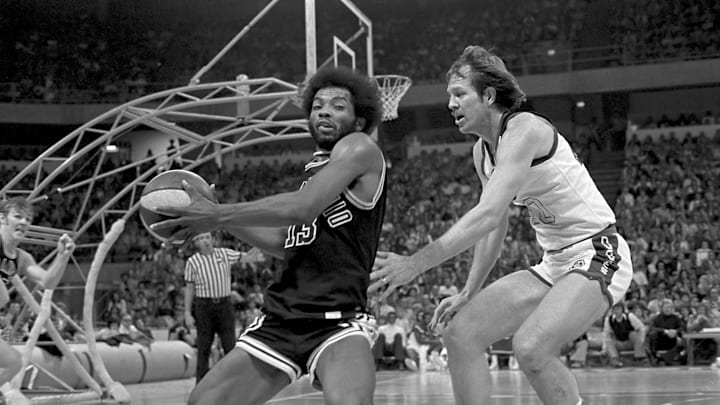
The franchise starts making changes
After three seasons, Cliff Hagen, the best player in the team's history thus far, announced his retirement. With him left the team name. The owners, when they paid attention, discovered something everyone today already knows: Dallas does not care about basketball.
In hindsight, this seems obvious, but in a prehistoric time before fire, we were still figuring out the rules of the world. In an effort to adopt some Lone Star pride, the team rebranded as the Texas Chaparrals, which I personally find delightful.
As soon as the team stopped claiming the 214, they plummeted, dropping to 30-54, their first losing season. Despite that, they managed to make it all the way to the Western Division Semifinals, which was the same result they had in the last two years.
While the end result of the season was lousy, some lessons were learned. As the Texas Chaparrals, the team decided to look elsewhere to attract fans. They split time between Dallas, Lubbock, and Fort Worth. In Fort Worth, fans decided they cared less than the Dallas fans, as only 200 showed up for one game.
The lowest ever NBA attendance was 741, so getting only 200 people to show up is frankly amazing. Fort Worth was not given another chance, as the team opted to play all their remaining games in Dallas and re-rebranded the next season, returning to their original name.
It worked. In the 1972 season, the Chaps turned it around, got back up to .500, and head coach Tom Nissalke was named ABA Coach of the Year. Things were looking up in Dallas, so ownership did the only thing that made sense: they opted not to renew Nissalke’s contract, so he took a job with the Supersonics of the NBA.
Of course, without their coach or any type of generational talent, the Chaparrals finished their forgettable stint in Dallas with their worst record yet. They missed the playoffs, but no one really cared. They were leased to a group of less well-off businessmen, and the rest, well, becomes the story most of us know.

The Chaparrals make the move to San Antonio
A team needs three things to be considered real: a place to play, a name, and a coach. Oh, players and competent ownership would be nice, but as we saw in 1967 with the Chaps, if you don’t have players, make the coach play! And if you don’t have competent ownership, 200 people will still show up.
The team formerly known as the Chaps had everything they needed. HemisFair Arena was a great stadium for an emerging team, and it sat more than any of the previous stadiums. The team averaged over 6,000 fans in their first year, which was a massive crowd after the Fort Worth debacle.
A team also needs a name, and new “ownership” settled on the San Antonio Gunslingers. For unknown reasons, they then had a team naming contest, and “Spurs” prevailed. The ownership group of Angelo Drossos, Red McCombs, and John Schaefer needed to find a coach. They ultimately decided on a proven ABA coach named Tom Nissalke. Welcome back, Tom!
The new ownership did not own the Spurs outright. They opted to lease the team from the Chaps' owners with an option to buy the team outright after three years. Obviously, this didn’t happen, although it would have been one of the funnier things the franchise could have done.
Drossos and company opted to buy the team after the first season. After getting crowds in the hundreds in Dallas, the players were just happy to have sizable crowds, prompting point guard Joe Hamilton to say, "It's just great to play for these people. They're rooting for us all the time. Last year at Dallas we'd have 600 or 700 people at our games, and if we got something going, maybe a dozen of them would start yelling. The rest of them just sat there."
The first year, the Spurs finished barely above .500 but were one of the most beloved teams in the ABA. The ABA Spurs drew larger crowds than the NBA Rockets, and it was clear that the Spurs would soon be the premier team in the state of Texas.
The final two seasons of the Chaparral/Spurs in the ABA consisted of above-average basketball that involved some of the best defense on any court. While it was the on-court play that resulted in getting merged into the NBA, it was the off-court drama that paved the way.
